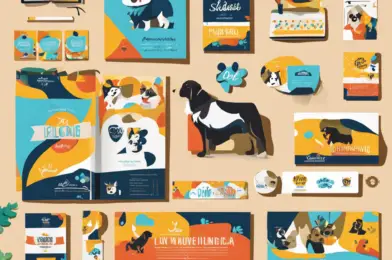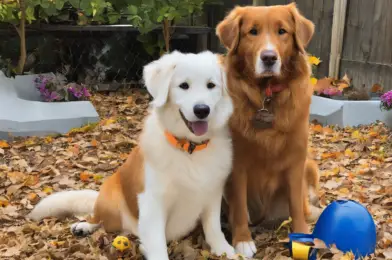Your furry friend deserves a tasty treat, and what could be better than homemade peanut butter dog biscuits made with just a few simple ingredients? These 5-ingredient biscuits are quick to whip up and will have your dog wagging their tail with delight!
Ingredients for these tasty treats include peanut butter, the star of the show, a natural source of protein and healthy fats that most dogs adore. Oats provide a hearty base for the biscuits, offering essential fiber and nutrients. Eggs bind the mixture together and provide additional protein, while cinnamon adds a touch of warmth and flavor. Lastly, a dash of honey offers a hint of sweetness and some added antioxidants.
Preheat your oven to 350°F and line a baking sheet with parchment paper. In a large bowl, combine 2 cups of quick-cooking oats, 2/3 cup of creamy peanut butter (unsalted and with no added sugar), 2 large eggs, 2 tablespoons of honey, and a pinch of cinnamon. Mix until a soft, slightly sticky dough forms. If the dough is too wet, add a tablespoon of oats at a time until it’s manageable but still moist.
On a floured surface, roll out the dough to ¼ inch thickness and use your favorite cookie cutters to create fun shapes. You can also simply roll the dough into small balls and flatten them with a fork. Place the biscuits onto the prepared baking sheet, ensuring they are spaced slightly apart.
Bake for 15-18 minutes, or until the biscuits are golden brown. Allow them to cool completely before sharing with your four-legged friend. These treats can be stored in an airtight container at room temperature for up to a week or frozen for longer shelf life.
These homemade dog biscuits are a healthier alternative to store-bought treats, as you know exactly what’s in them. The simple ingredient list means you can feel good about spoiling your pet without worrying about artificial additives or preservatives. Plus, the baking process is a fun activity to do with kids or as a solo project on a rainy day.
Get creative with the presentation too! Decorate a jar with colorful ribbons and fill it with these homemade biscuits to gift to a dog-loving friend. Or, for a special touch, personalize each treat with your dog’s name using a small letter mold before baking. Your pup will enjoy the personal touch, and you’ll love the joy it brings them.
Keep in mind that while peanut butter is generally safe for dogs, it should be given in moderation due to its fat content. Always monitor your dog’s reaction to new foods, and consult your veterinarian if you have any concerns or if your dog has specific dietary restrictions.
Baking these peanut butter biscuits is a fun, engaging activity, and the end result is a delicious treat your dog will love. Get ready to earn some serious tail wags and a few extra kisses from your four-legged friend! Enjoy the bonding experience and happy baking!
So, there you have it—a simple, fun recipe that your dog will go mutts for. Happy baking, and enjoy the special moments these treats will bring you and your furry companion!










